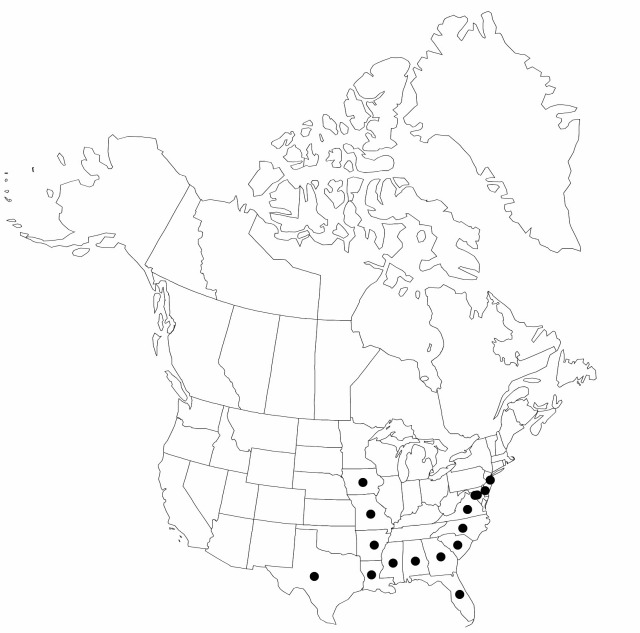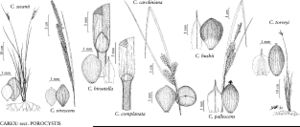Carex complanata
Ann. Lyceum Nat. Hist. New York 3: 408. 1836.
Culms 20–75 cm, glabrescent. Leaves: sheaths sparsely pilose, but usually densely pilose at mouth; ligules shorter than wide; blades 1.5–4 mm wide, glabrescent, or often persistently pilose proximally. Inflorescences: lateral spikes approximate or proximal distant, 6–15 × 4–5 mm; terminal spike gynecandrous, at least 1/2 of flowers pistillate, 14–25 mm. Pistillate scales ovate, 1.9–3(–3.5) × (0.8–)0.9–1.5(–1.7) mm, shorter than to equaling perigynia, apex acute to acuminate, sometimes with awn to 0.5 mm. Staminate scales oblong-obovate, 2.7–5.3 mm, apex acuminate or short-awned. Anthers 1.5–2.2 mm. Perigynia ascending, 5–18-veined, obovate-circular, ± trigonous in cross section, 2–3.5 × 1.1–2.1 mm, not papillose, glabrous or sparsely pilose; beak absent. Achenes 1.6–2.3 × 0.9–1.5 mm.
Phenology: Fruiting late spring–early summer.
Habitat: Dry open woods, neutral to acidic soils
Elevation: 0–500 m
Distribution

Ala., Ark., Del., D.C., Fla., Ga., Iowa, La., Md., Miss., Mo., N.J., N.C., S.C., Tenn., Tex., Va., Mexico.
Discussion
Selected References
None.
